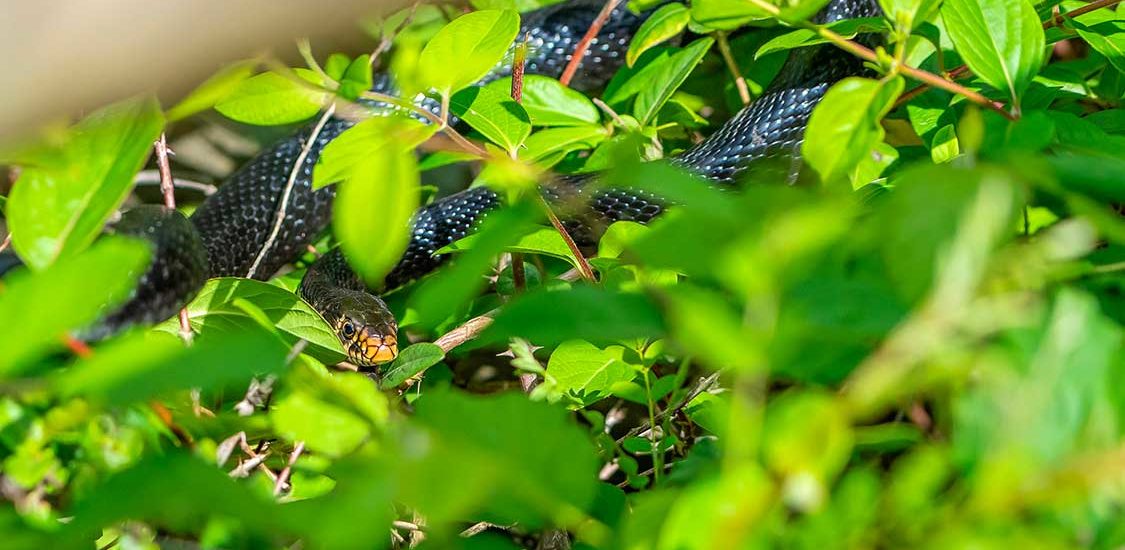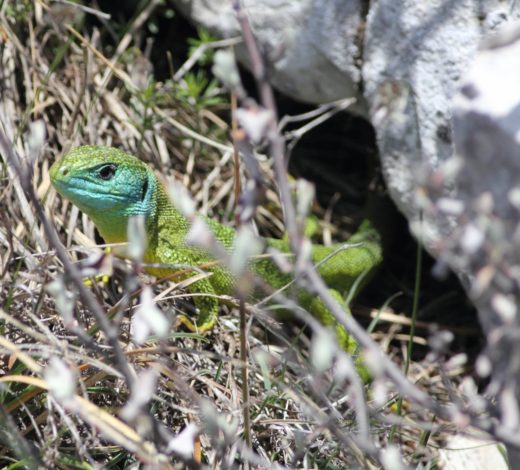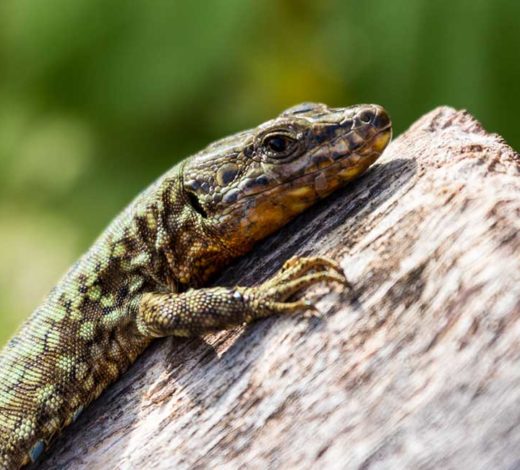Green Whip Snake
(Hierophis viridiflavus)
A species protected by the Habitat Directive (Annex IV). A large, non-venomous snake.
Distribution
Spread throughout the Italian peninsula and islands.
Description
The young have a rather simple colouring with a light grey background. Their head, however, has the same colouring as adults, with a yellowish background covered by broad areas of shiny black. As the individuals grow and mature, the entire body takes on a yellow-orange colour with a dense, black, diamond-shaped design. Together with Natrix natrix, it is the most common snake in Italy. Green whip snakes are decidedly diurnal and heliophilous, coming out only on sunny days. In fact, to achieve such quick movements and reflexes, they must reach an ideal body temperature of 37°C.
Habitat
Their lifestyle is marked by adaptability, colonizing the widest range of environments and living easily both on the ground and in trees. In general, they like dry stone walls where numerous burrows can be found, along with their preferred prey: lizards. However, they are not particular with respect to food, especially as adults, feeding on practically any prey they manage to get in their mouths. They use a ‘hit and swallow’ hunting technique. In fact, even if it may appear cruel, green whip snakes generally swallow their prey while still alive, since they are not able to constrict in any way. At dawn, they curl up in a well-exposed place in the sun to reach their ideal temperature and then actively dedicate themselves to hunting. Once they are full, they curl up again in a semi-sheltered position so they can digest. As soon as their temperature drops, they return to their burrows. This behaviour means that if you find a green whip snake at a certain point (and you don’t scare it), you will often find it there.
Observation in the Torbiera Reserve
These snakes are relatively common in the Reserve, particularly on sunny days when they warm themselves on the rocks to reach their ideal temperature.



